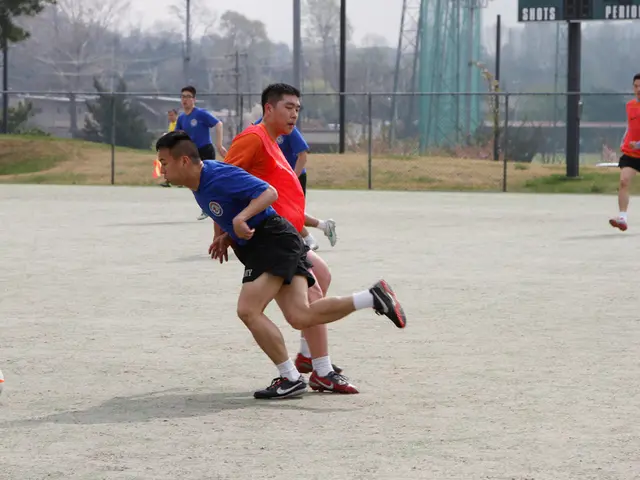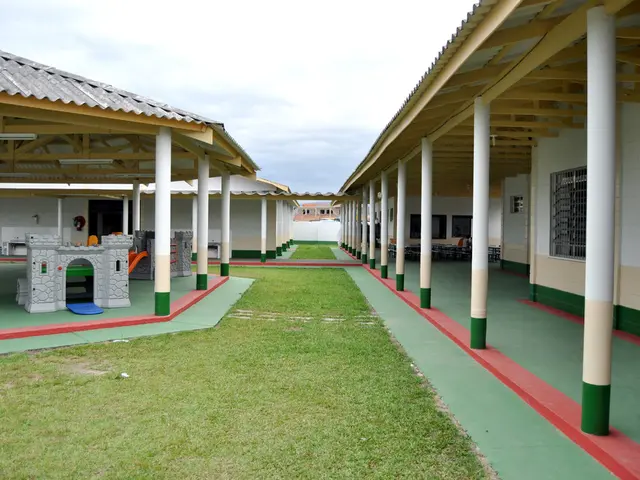Empowering New York's Senior Citizens: Focusing on the Elderly Population's Needs and Welfare
In a bid to improve the quality of life for older adults and individuals with disabilities, New York City has unveiled the Master Plan for Aging (MPA), a comprehensive 10-year strategic framework. Released in 2025, the MPA aims to ensure that these individuals can age with dignity, independence, and good health while living in their communities for as long as possible.
The MPA includes more than 100 proposals spanning government, private, and social sectors, developed through collaboration among state agencies, experts, stakeholders, and community input. The plan addresses several challenges faced by older adults and those with disabilities, including affordability of basic necessities, access to housing with supportive services, prevention and wellness promotion, combating elder abuse, ageism, and stigma, care and services, community integration and social inclusion, economic security, and system coordination.
One of the key proposals is the focus on the affordability of basic necessities to ease economic burdens. The MPA aims to make life more affordable for older adults by providing cost-effective supportive community care systems for older adults aged 75 and over with health issues. These systems, which cost between $50,000-$58,000 compared to $185,000 per person per year to keep someone in a nursing home, have been proven to yield a better quality of life.
Another critical area addressed by the MPA is the need for age-friendly and accessible housing options. The plan aims to provide older adults with access to housing with supportive services, addressing the need for age-friendly and accessible housing options.
The MPA also emphasizes the importance of healthy aging and improved care coordination. It encourages preventive care, wellness promotion, and healthcare access to ensure older adults can live healthier lives.
In addition, the MPA aims to combat elder abuse, ageism, and stigma by protecting vulnerable populations and promoting respect and inclusion. It also seeks to ensure financial stability for older adults and persons with disabilities through economic security initiatives.
The MPA is designed to respond to New York's growing population of adults over age 65 and the shrinking caregiving workforce. It signals broad policy realignment at state and local levels, with implications for regulatory frameworks, budget priorities, and service delivery. The plan aligns with pending federal Medicaid proposals to expand supports for family caregivers and develop programs like PACE (Program of All-Inclusive Care for the Elderly).
The MPA outlines caregiving career pipelines and aims to mitigate gaps in services. Notably, the state of New York has allocated $50 million to address program shortages and workforce issues at local aging agencies.
The social safety net for older adults in New York is under threat, with potential cuts to the Older Americans Act, Adult Protective Services, Medicaid, Medicare, and SNAP benefits. Advocates are urging for a cultural shift against ageism and addressing economic and food insecurity, the caregiving crisis, and the need for greater investments in older adults' economic security.
Lorraine Cortés-Vázquez, commissioner of the New York City Department for the Aging, emphasized the need for a cultural shift against ageism and the importance of supporting older adults and young people equally. Forbes-Thomas also mentioned that it will take more than just the election to change the way society perceives and values older adults.
As longer lifespans become more common, city and statewide advocates are urging for greater investments in older adults' economic security, including pension, personal savings, and Social Security. Food insecurity continues to increase among older adults in New York, with 500,000 enrolled on SNAP benefits, 49,000 in section 8 housing, and 86,000 living in public housing.
In conclusion, the Master Plan for Aging in New York aims to create an age-friendly environment where older adults and people with disabilities can thrive with freedom, dignity, and independence. The plan is a significant step towards addressing the needs of older adults and individuals with disabilities in New York City and beyond.
- The housing market in New York City is under focus to cater to the needs of older adults and those with disabilities.
- The Master Plan for Aging (MPA) includes proposals for affordable supportive community care systems for elderly individuals with health issues.
- The cost of these supportive community care systems is significantly less than keeping someone in a nursing home, enhancing the quality of life.
- Age-friendly and accessible housing options are crucial for older adults, a necessity addressed by the MPA.
- Healthy aging and improved care coordination are priorities in the MPA, promoting preventive care, wellness, and healthcare access.
- The MPA aims to combat elder abuse, ageism, and stigma by safeguarding vulnerable populations and fostering respect and inclusion.
- Financial stability is another focus of the MPA, with initiatives to ensure economic security for older adults and those with disabilities.
- The MPA targets the growing population of adults over age 65 and the shrinking caregiving workforce, aligning with federal Medicaid proposals.
- The plan outlines caregiving career pipelines and allocates funds to address program shortages and workforce issues at local aging agencies.
- The social safety net for older adults in New York could face cuts in funds from programs like the Older Americans Act, Adult Protective Services, Medicaid, Medicare, and SNAP benefits.
- Advocates are pushing for a cultural shift against ageism and addressing economic and food insecurity, caregiving crisis, and the need for investments in older adults' economic security.
- Lorraine Cortés-Vázquez, commissioner of the New York City Department for the Aging, advocates for a cultural shift against ageism and equal support for older adults and young people.
- Greater investments in older adults' economic security, including pension, personal savings, and Social Security, are necessary as lifespans extend.
- Food insecurity among older adults in New York continues to rise, with a significant number enrolled on SNAP benefits, living in section 8 housing, and residing in public housing.
- The MPA aims to create an age-friendly environment where older adults and people with disabilities can live with dignity, independence, and good health.
- The MPA's comprehensive approach covers government, private, and social sectors, developed through collaboration and community input.
- One of the challenges addressed by the MPA is the affordability of basic necessities for older adults and those with disabilities.
- The MPA's approach to combating elder abuse, ageism, and stigma includes protecting vulnerable populations and promoting respect and inclusion.
- The MPA encourages preventive care, wellness promotion, and healthcare access to ensure older adults can live healthier lives.
- The focus on healthy aging and improved care coordination is essential in addressing the needs of older adults and individuals with disabilities.
- The MPA highlights the need for age-friendly and accessible housing options to cater to the needs of older adults.
- The plan aims to mitigate gaps in services through caregiving career pipelines and addressing workforce issues at local aging agencies.
- The MPA outlines its goals and approaches to address several challenges faced by older adults and those with disabilities.
- In the realm of science, research and therapies for chronic diseases, respiratory conditions, digestive health, eye-health, hearing, autoimmune disorders, and cancer continue to evolve.
- Innovations in fitness and exercise, medical-conditions management, and workplace-wellness further contribute to improving the health and wellness of older adults.
- In the realm of mental health, therapies and treatments for mental health conditions are essential for overall health and wellbeing.
- Skin-care, a crucial aspect of health, has innovations in treatment for various skin conditions.
- As the world becomes more connected, online education, learning, goal-setting, personal growth, and mindfulness have become valuable tools for self-development, productivity, and career-development in various small businesses, entrepreneurship, and industries, including retail, finance, energy, and fintech.





